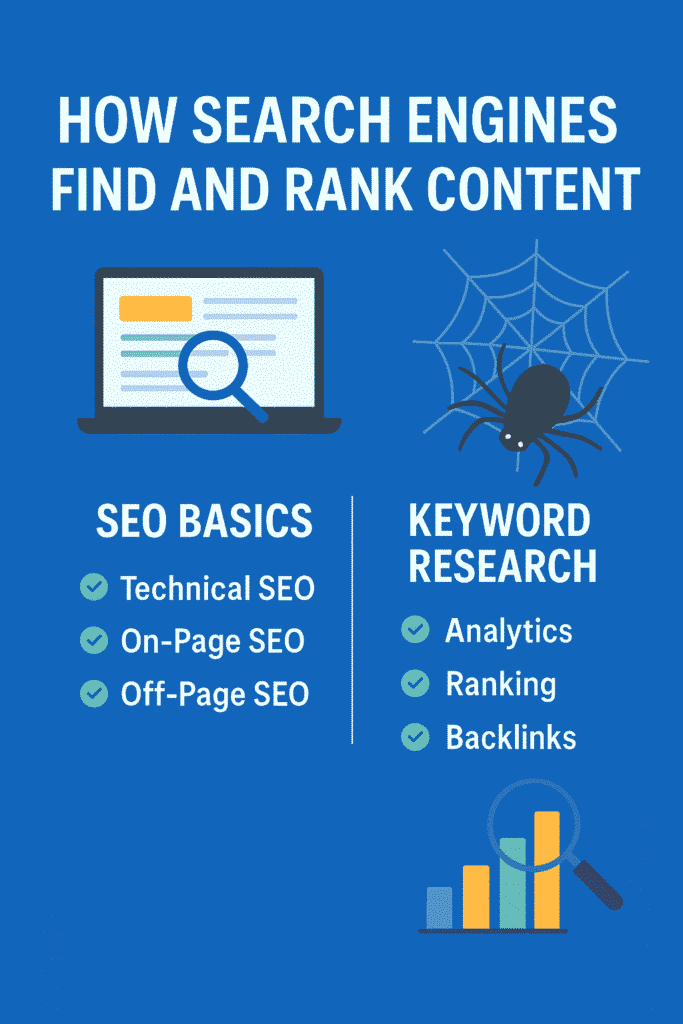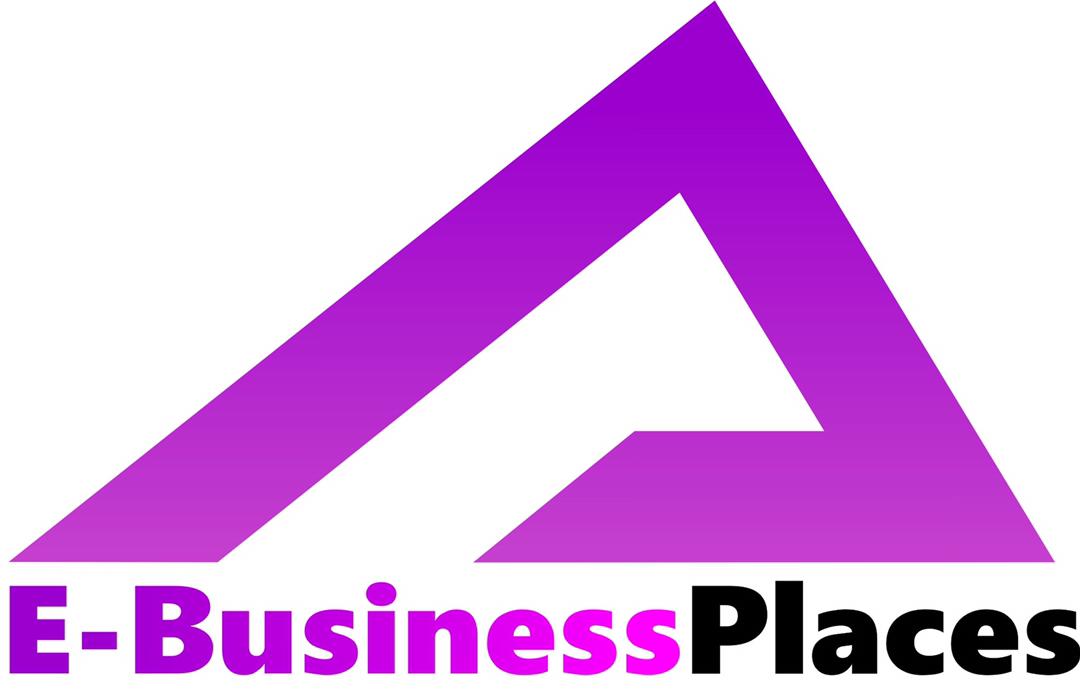How Search Engines Find and Rank Content (SEO for Beginners)

Search engines like Google don’t just “look” for content on demand. Instead, they use automated programs called web crawlers (also known as spiders or Googlebot) to constantly explore the internet. Crawlers follow links from one page to another, reading and storing information about billions of web pages in a massive database called an index.
When someone performs a search, Google’s ranking algorithms quickly scan this index to find the most relevant, high-quality web pages and display them in the search results.
If you want your content to show up on Google, you need to make it discoverable and understandable for these crawlers through SEO (Search Engine Optimization).
How to “Pair Your Website” with Google & Other Search Engines
Here is a step-by-step SEO guide, starting from the basics and moving into more advanced techniques.
Step 1: The SEO Basics (Non-Negotiable)
- Create a Website: Your content must live on a publicly accessible domain name (e.g., yoursite.com).
- Publish Valuable Content: Write original, helpful articles that answer search queries people are already Googling.
- Use Reliable Hosting: Choose a good hosting service (like Bluehost, SiteGround, AWS) so your site loads fast and is always online.
Step 2: Technical SEO Setup (Discovery & Indexing)
This is about making it easy for Google crawlers to find and understand your pages.
- Create a Sitemap (sitemap.xml): Think of this as a map you hand to Google. Most CMS platforms (WordPress, Wix, Squarespace) can generate it automatically.
- Use Robots.txt Effectively: This file tells search engines what they can or cannot scan.
- Submit Your Site to Search Engines:
- Google → Use Google Search Console to verify your site and submit your sitemap.
- Bing → Use Bing Webmaster Tools for the same process.
Step 3: On-Page SEO (Optimizing Content for Keywords)
Here you optimize your content so that Google knows what your page is about.
- Keyword Research: Use tools like Google Keyword Planner, Ahrefs, or SEMrush to find what people are searching for.
- Use Keywords Naturally:
- Title Tags (<title>): Include your main keyword.
- Headings (H1, H2, H3): Structure content logically with relevant keywords.
- Body Content: Use keywords naturally without stuffing.
- Image Alt Text: Add descriptive alt tags so Google understands your images.
- Meta Description: Write a compelling summary with your target keyword.
Step 4: Off-Page SEO (Building Authority)
Off-page SEO shows Google that your site is trustworthy and authoritative.
- Earn Backlinks: When reputable websites link to you, Google sees this as a “vote of confidence.”
- How to Get Backlinks: Create high-value resources, guides, and original content that others want to reference.
- Leverage Social Media: Share your content across platforms to increase visibility and potential backlinks.
Step 5: Ongoing SEO Maintenance
SEO isn’t one-and-done. Monitor and improve constantly.
- Google Analytics: Track how many people visit, which pages they like, and where they come from.
- Google Search Console: See what keywords you rank for, fix errors, and monitor your performance.
🚫 What NOT To Do (Black Hat SEO)
Avoid these tactics—they can get your site penalized or banned from Google search:
- Keyword Stuffing (overusing keywords unnaturally).
- Buying Spammy Links from link farms.
- Cloaking (showing different content to search engines than users).
- Duplicate Content (copying from other sites).
SEO in Summary: How to Get Google to Rank Your Site
| Step | Action | Tool / Method | Goal |
|---|---|---|---|
| 1. Create | Build a website with high-quality content | CMS + Hosting | A resource worth sharing |
| 2. Submit | Tell Google you exist | Search Console, Bing Webmaster | Get indexed |
| 3. Optimize | Add keywords, titles, headings, alt text | On-page SEO | Help crawlers understand |
| 4. Promote | Build authority with backlinks & social proof | Outreach, guest posting | Boost ranking |
| 5. Monitor | Track progress & improve | Analytics + Search Console | Grow over time |
The Bottom Line
Think of Google as a blind librarian. It can’t “see” your website unless you give it clear signals through SEO. The more you guide it with titles, meta descriptions, keywords, internal links, and backlinks, the better chance your site has to rank on the first page of Google search results.
